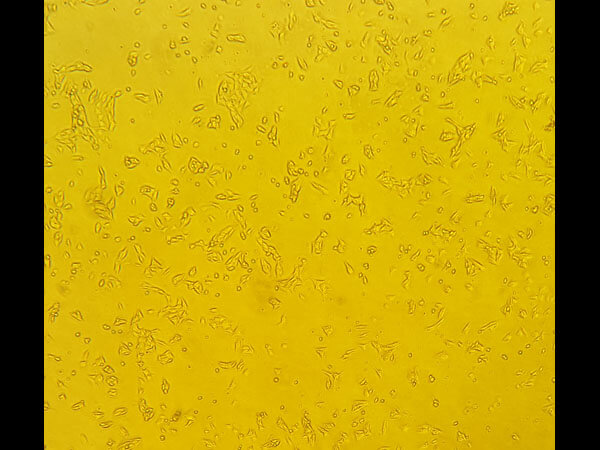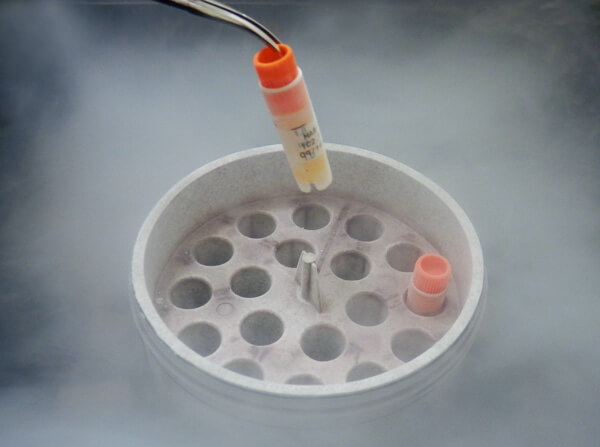WM1341D Viable Cells
$50.00 to US & $70.00 to Canada for most products. Final costs are calculated at checkout.
Product Details
Target Details
Application Details
Cell Line Data
Formulation
Shipping & Handling
How can I ensure that the cells will be viable after resuspension?
Complete adherence to the protocol is necessary to ensure the viability of the cells. Cells should be maintained between 30-95% confluence in Tumor Specialized media with 2% FBS (heat inactivated) unless otherwise noted in cell line specific instructions.
How should I handle the cells before culturing?
Before thawing, frozen cells can be stored in liquid nitrogen or at -80°C only. To thaw the melanoma cells, move the vial from liquid nitrogen to dry ice immediately. Melanoma cells should be thawed quickly. Freeze thaw cycles can damage / kill the cells and should be avoided. Centrifuge the cells at 1500 rpm (500 x g) for 5 minutes at room temperature. Discard the supernatant. Resuspend cell pellet in 5 mL of Tumor Specialized Media with FBS (heat inactivated) and transfer to a T-25 flask. Place the flask in a humidified incubator (5% CO2) at 36°C overnight. Check the flask after 24 hours for attachment of cells to the flask. If cells are attached, remove the media and add fresh media to the flask.
Which media should I use to grow melanoma cells?
Tumor specialized Media with 2% FBS is preferred media for melanoma cell lines. However, alternative media (not preferred) recommendations include: 1. DMEM with 5% FBS; 2. RPMI with 5% FBS.
Do you have recommended sources for Tumor Specialized Media components?
The recommended manufacturer for each component of the Tumor Specialized Media are: MCDB-153 (Sigma-Aldrich, item# M-7403), Leibovitz’s L-15 (Sigma-Aldrich, item# L1518), FBS (heat inactivated) (Rockland, item# FBS-010-0100), Calcium Chloride (Sigma-Aldrich, item# C5670), Sodium Bicarbonate [Added to MCDB-153 preparation] (Sigma-Aldrich, item# S5761). Please consult the protocol for detailed instructions on the preparation of the media.
What is the optimal growth temperature for melanoma cells?
Melanoma cells grow best at 36°C (not 37°C) with 5% CO2. These incubation conditions must be followed exactly to ensure the viability and growth of the cells.
What is the recommended media for freezing viable melanoma cells?
Freezing media containing 90% FBS and 10% DMSO. Thawed cells should not be frozen again. Melanoma cells should be frozen slowly but thawed quickly.
What is the source of the melanoma cell lines?
The melanoma cell lines were established from patient-derived tumors. Information about the patients or treatments received is not available.
Are melanoma cell lines immortalized?
Melanoma cell lines are considered immortalized because they can replicate indefinitely.


